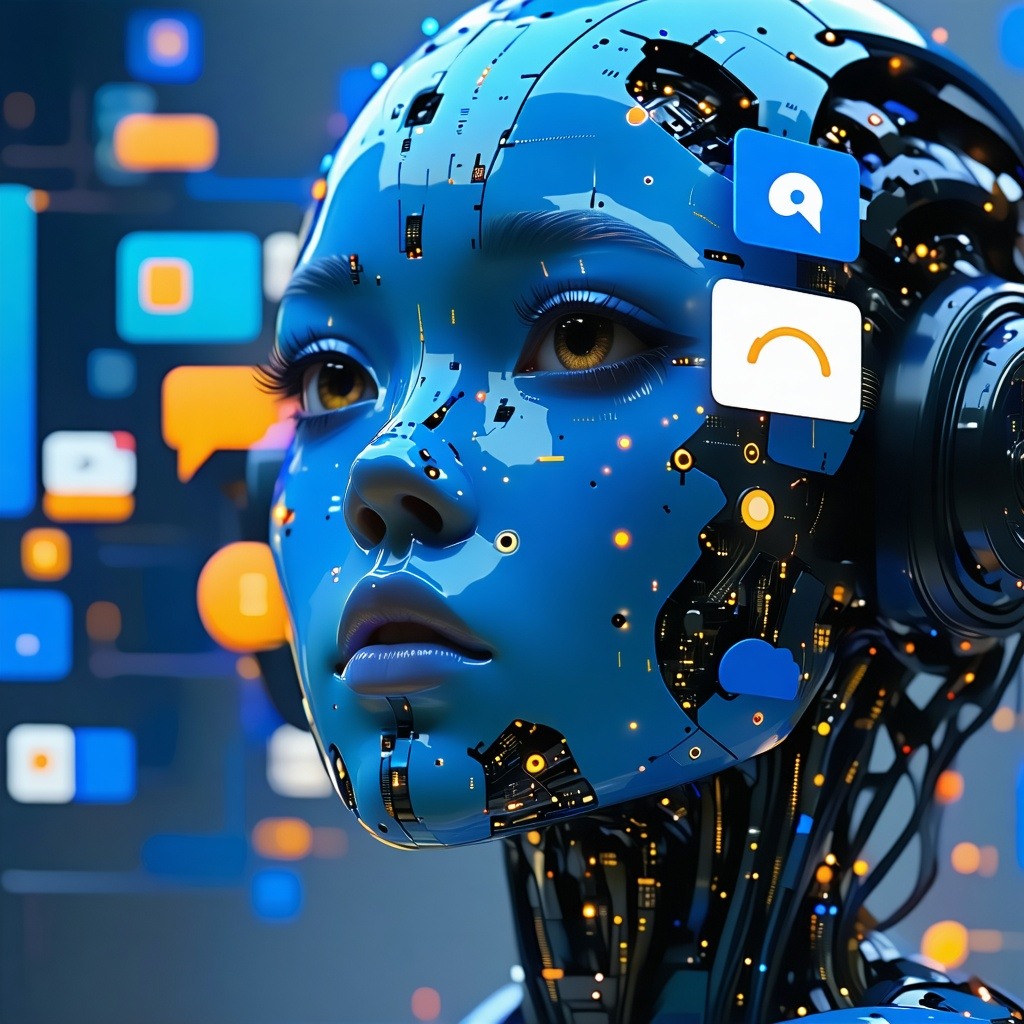The rise of Artificial Intelligence (AI) has ushered in a new era where robots aren’t just programmed to perform tasks—they’re learning to communicate, interact, and even hold conversations. Talkative AI robots, equipped with advanced Natural Language Processing (NLP) and machine learning capabilities, are transforming the way we interact with machines, making them seem more like humans than ever before. Whether in customer service, healthcare, entertainment, or even at home, these AI-powered bots are changing the landscape of communication.
But what exactly are talkative AI robots, and how will they shape the future of human-robot interactions? Let’s dive into this fascinating world of conversational AI and explore the potential impact these robots are set to have on our daily lives.
What Are Talkative AI Robots?
Talkative AI robots are essentially advanced machines designed to understand and generate human language. They combine Natural Language Processing (NLP)—a field of AI that allows machines to interpret, understand, and generate human language—with speech recognition and synthesis to carry on conversations. These robots can range from simple voice assistants like Siri and Alexa to more sophisticated humanoid robots that can engage in complex dialogues.
These robots can learn from interactions, adapt their responses based on context, and offer a level of conversational fluidity that seems more human-like. Some are designed to respond to simple commands or queries, while others can engage in more nuanced discussions, offer personalized advice, and even express emotions.
The Rise of Conversational AI
The development of talkative AI robots has been significantly influenced by advancements in deep learning, neural networks, and big data. In the past, robots and AI systems were limited to pre-programmed responses and rule-based decision-making. Today, with the help of neural networks that mimic the human brain's processing abilities, AI robots can generate dynamic, context-aware replies that are much closer to human conversation.
The evolution of these robots has been fueled by several key advancements:
-
Improved NLP Models: Models like OpenAI’s GPT-3 and GPT-4 have drastically improved AI’s ability to understand the intricacies of human language, including idioms, slang, and emotional undertones.
-
Speech Synthesis Technology: Text-to-speech systems have improved to the point where AI voices sound remarkably natural, making interactions feel less robotic.
-
Machine Learning Algorithms: These algorithms allow AI robots to learn from every interaction, gradually improving their responses and becoming more sophisticated over time.
Applications of Talkative AI Robots
Talkative AI robots are already being used across various sectors, and as the technology continues to improve, their role will only expand. Here are a few key areas where these robots are making an impact:
1. Customer Service and Support
Customer service has always been a critical part of any business, and talkative AI robots are transforming how companies interact with their customers. Virtual assistants, chatbots, and AI-powered customer support robots can now handle everything from answering simple queries to troubleshooting complex issues. With the ability to understand and respond to a wide range of questions, these AI robots provide instant support to customers, ensuring that businesses can offer 24/7 assistance.
In addition to handling customer service inquiries, some robots are capable of identifying a customer’s emotional state through sentiment analysis and adjusting their responses accordingly. This helps create a more personalized experience for users.
Example:
Companies like Mitsuku (an award-winning chatbot) and LivePerson (AI-powered messaging platform) are already helping businesses offer enhanced customer service without human intervention.
2. Healthcare and Elderly Care
In healthcare, talkative AI robots are beginning to play an important role in patient care, especially for elderly individuals. These robots can monitor patients’ health, remind them to take medications, and provide companionship. In some cases, they can even engage in therapeutic conversations to help alleviate loneliness, which is a growing concern for older adults living alone.
Additionally, these AI robots can assist healthcare professionals by providing real-time patient data, answering medical queries, and even offering mental health support. With the ability to recognize signs of stress, anxiety, or depression, talkative robots can offer timely interventions that make a difference in patient well-being.
Example:
The Pepper robot, developed by SoftBank Robotics, has been used in healthcare settings to interact with patients, provide companionship, and assist with routine care tasks.
3. Education and Learning Assistants
Talkative AI robots are also making waves in the education sector. These robots can act as personalized tutors or learning companions, helping students with everything from math and science to language learning. Through interactive conversations, they can assess a student’s understanding, offer feedback, and even motivate them to continue learning.
In schools and online learning platforms, AI-powered robots are able to adapt to each student’s individual learning pace, providing a tailored education experience. They can even assist teachers by automating administrative tasks, allowing educators to focus more on teaching and student engagement.
Example:
Miko 3, an AI-powered robot designed for children, acts as a fun and engaging educational companion, teaching kids everything from coding to solving math problems in an interactive manner.
4. Entertainment and Social Companions
As AI robots become more talkative and emotionally intelligent, they are increasingly being used in entertainment. Virtual companions, powered by AI, can engage in conversations, tell jokes, share stories, and even play games with users. These AI robots are becoming social companions, offering users a sense of connection and interaction, especially in the world of virtual gaming or online entertainment.
Furthermore, AI-powered robots are beginning to feature in films and television, often playing roles where they interact with human characters. These portrayals help foster societal acceptance of AI technology and explore the potential emotional connections that humans might form with robots.
Example:
Sophia the Robot—created by Hanson Robotics—is one of the most famous humanoid robots and has appeared on multiple TV shows, giving interviews and even showcasing her ability to engage in conversations about a range of topics.
Challenges and Ethical Considerations
While talkative AI robots present exciting opportunities, there are several challenges and ethical considerations to keep in mind:
1. Emotional Impact
As robots become more conversational, they will increasingly be able to simulate empathy and emotional intelligence. While this can provide comfort and support, there is a concern about whether humans will form emotional attachments to machines that don’t truly understand emotions. Could these robots replace genuine human interaction? The emotional impact of AI companionship is a topic of growing debate.
2. Privacy and Security
AI robots are collecting and processing vast amounts of data, including personal conversations and behavioral patterns. Ensuring that this data is kept secure and that users’ privacy is respected will be a critical issue. What happens if these robots are hacked or used maliciously?
3. Job Displacement
As AI robots become more proficient in communication and problem-solving, there’s a potential for displacement in customer service, healthcare, and other human-dependent fields. While robots can increase efficiency and reduce costs, there’s a risk that jobs traditionally held by humans could be automated away.
The Future of Talkative AI Robots
The future of talkative AI robots is incredibly bright. With advancements in AI technology, we are moving closer to a world where robots can not only assist us with daily tasks but also hold meaningful conversations and provide emotional support. From personal assistants to healthcare aides and educational companions, these robots will play an increasingly important role in our lives.
As they continue to evolve, the goal will be to create AI robots that can not only understand and generate human language but also comprehend the nuances of human emotion, cultural context, and ethical considerations. In the end, the question may not be whether we can create robots that talk, but how we can build those that genuinely enhance our human experience.
Stay tuned for more insights into the world of AI robots and how they’re shaping the future of human-robot interactions.



